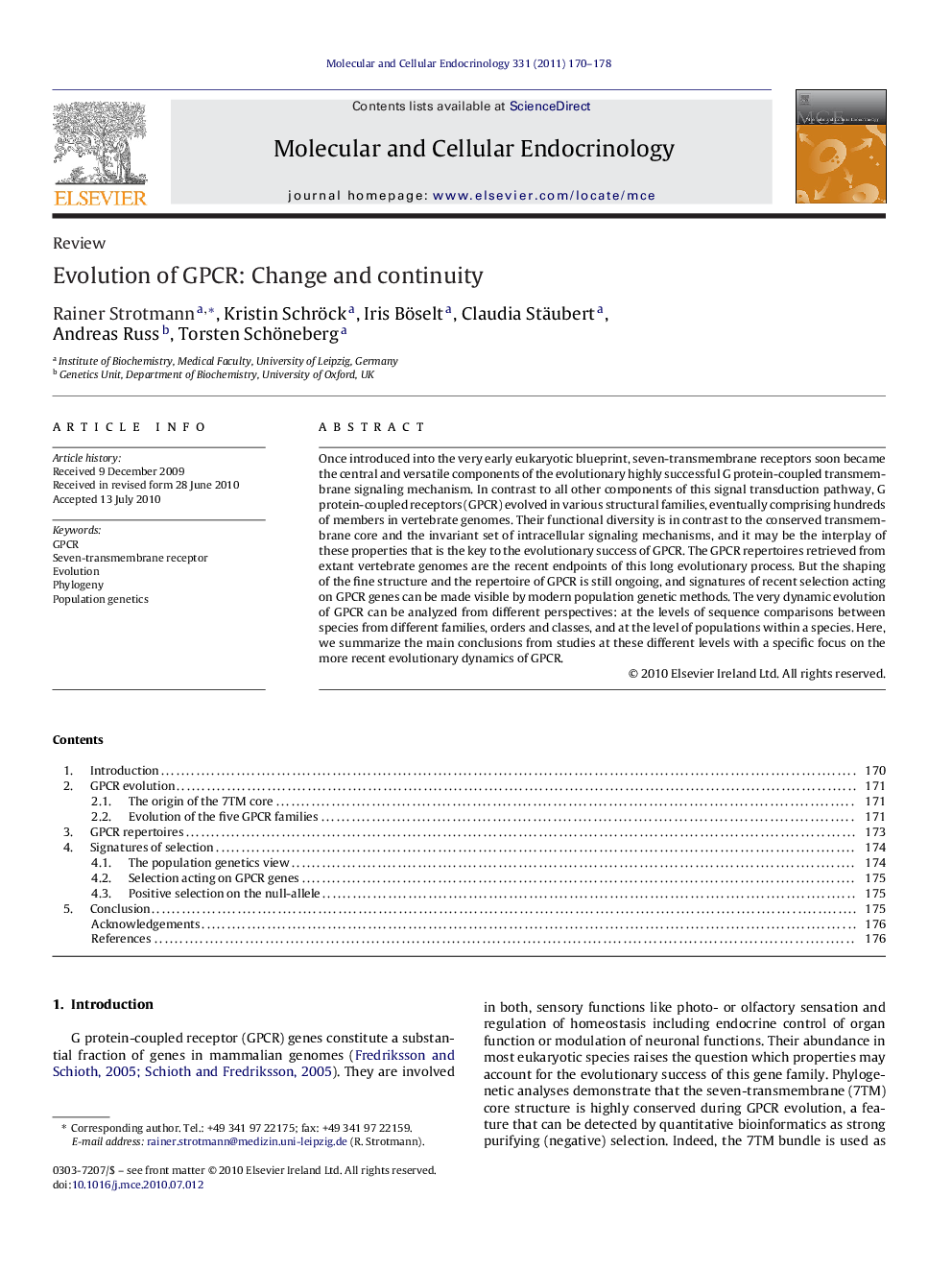| کد مقاله | کد نشریه | سال انتشار | مقاله انگلیسی | نسخه تمام متن |
|---|---|---|---|---|
| 10956349 | 1098844 | 2011 | 9 صفحه PDF | دانلود رایگان |
عنوان انگلیسی مقاله ISI
Evolution of GPCR: Change and continuity
دانلود مقاله + سفارش ترجمه
دانلود مقاله ISI انگلیسی
رایگان برای ایرانیان
کلمات کلیدی
موضوعات مرتبط
علوم زیستی و بیوفناوری
بیوشیمی، ژنتیک و زیست شناسی مولکولی
بیولوژی سلول
پیش نمایش صفحه اول مقاله

چکیده انگلیسی
Once introduced into the very early eukaryotic blueprint, seven-transmembrane receptors soon became the central and versatile components of the evolutionary highly successful G protein-coupled transmembrane signaling mechanism. In contrast to all other components of this signal transduction pathway, G protein-coupled receptors (GPCR) evolved in various structural families, eventually comprising hundreds of members in vertebrate genomes. Their functional diversity is in contrast to the conserved transmembrane core and the invariant set of intracellular signaling mechanisms, and it may be the interplay of these properties that is the key to the evolutionary success of GPCR. The GPCR repertoires retrieved from extant vertebrate genomes are the recent endpoints of this long evolutionary process. But the shaping of the fine structure and the repertoire of GPCR is still ongoing, and signatures of recent selection acting on GPCR genes can be made visible by modern population genetic methods. The very dynamic evolution of GPCR can be analyzed from different perspectives: at the levels of sequence comparisons between species from different families, orders and classes, and at the level of populations within a species. Here, we summarize the main conclusions from studies at these different levels with a specific focus on the more recent evolutionary dynamics of GPCR.
ناشر
Database: Elsevier - ScienceDirect (ساینس دایرکت)
Journal: Molecular and Cellular Endocrinology - Volume 331, Issue 2, 15 January 2011, Pages 170-178
Journal: Molecular and Cellular Endocrinology - Volume 331, Issue 2, 15 January 2011, Pages 170-178
نویسندگان
Rainer Strotmann, Kristin Schröck, Iris Böselt, Claudia Stäubert, Andreas Russ, Torsten Schöneberg,